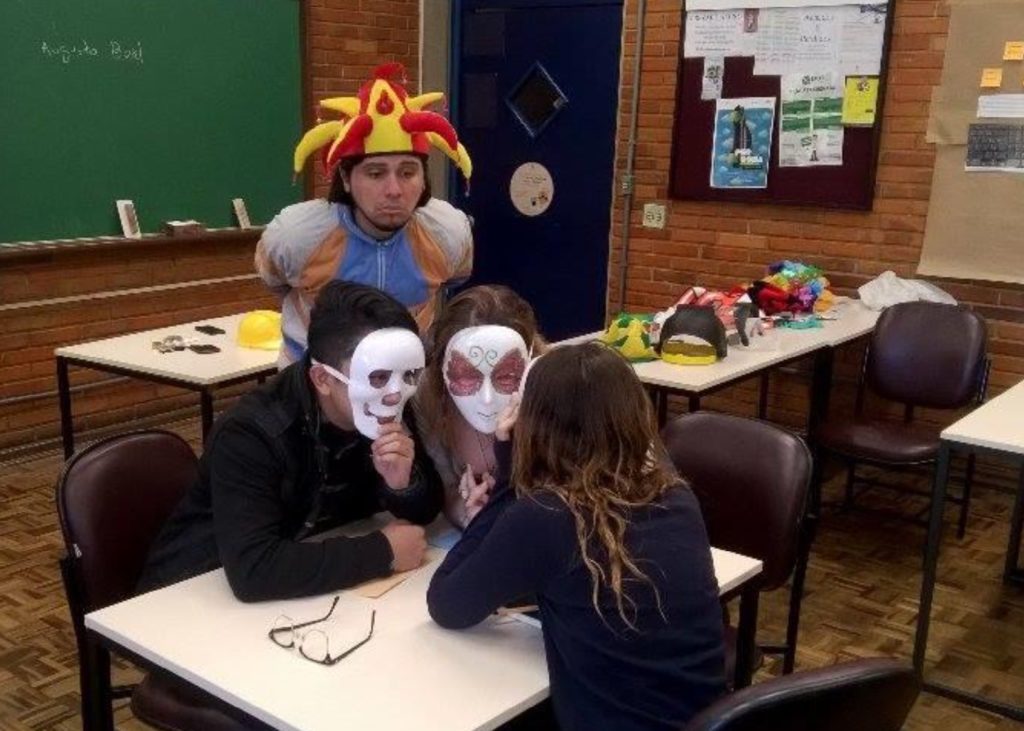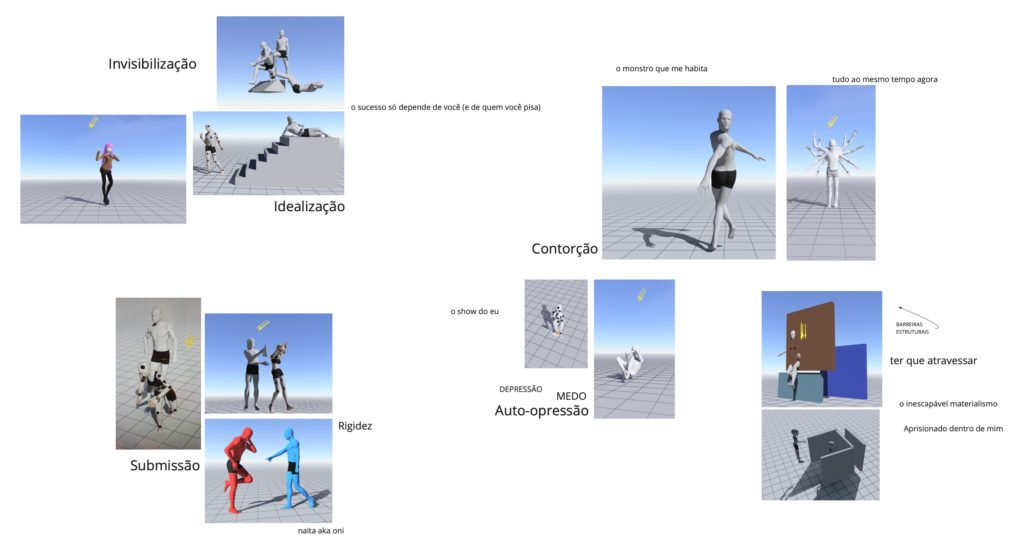Image theater is the most popular and accessible Theater of the Oppressed technique. It consists of telling an oppression story through a static body image. The spect-actors stand in postures that, altogether, suggest an oppressive action. There is no voice, explanation or movement in the image, although that can be added later for further inquiries into the oppressive situation. The image is presented to the audience with little cues to foster an open debate on its possible meanings. The spect-actors cannot correct the audience’s readings or disclose their original intentions. Image theater is about the reality of representation in everyday life, not the accurate representation of reality.
After the image is presented, the joker asks the following questions to the audience:
- What do you see in this image?
- What is going on with these people?
- Who is the oppressed, and who is the oppressor?
- What are their desires?

In a typical image theater workshop, several images are presented and discussed. Comparing and revising them leads to further insights into the oppression structure. If image dynamization is explored (altering images to try an oppression reaction), these can be documented in an oppression reaction diagram.
Remote image theater
Image theater workshops can be held remotely using 3D dummy model applications like Magic Poser Web or Magic Poser Mobile App. It is not as easy as making images with physical bodies, though further resources are available. Image-making becomes a more analytical and subtle activity.

Images can be shared using an online whiteboard such as Miro, which allows the audience to add readings in textual form without disrupting verbal dialogue. It is an excellent addition to image theater, which enables subsequent asynchronous sharing.

Once images are thoroughly discussed, they can be mixed and touched collectively using the board’s collaborative drawing features. This activity can help reveal the common structures across several oppressive situations.

